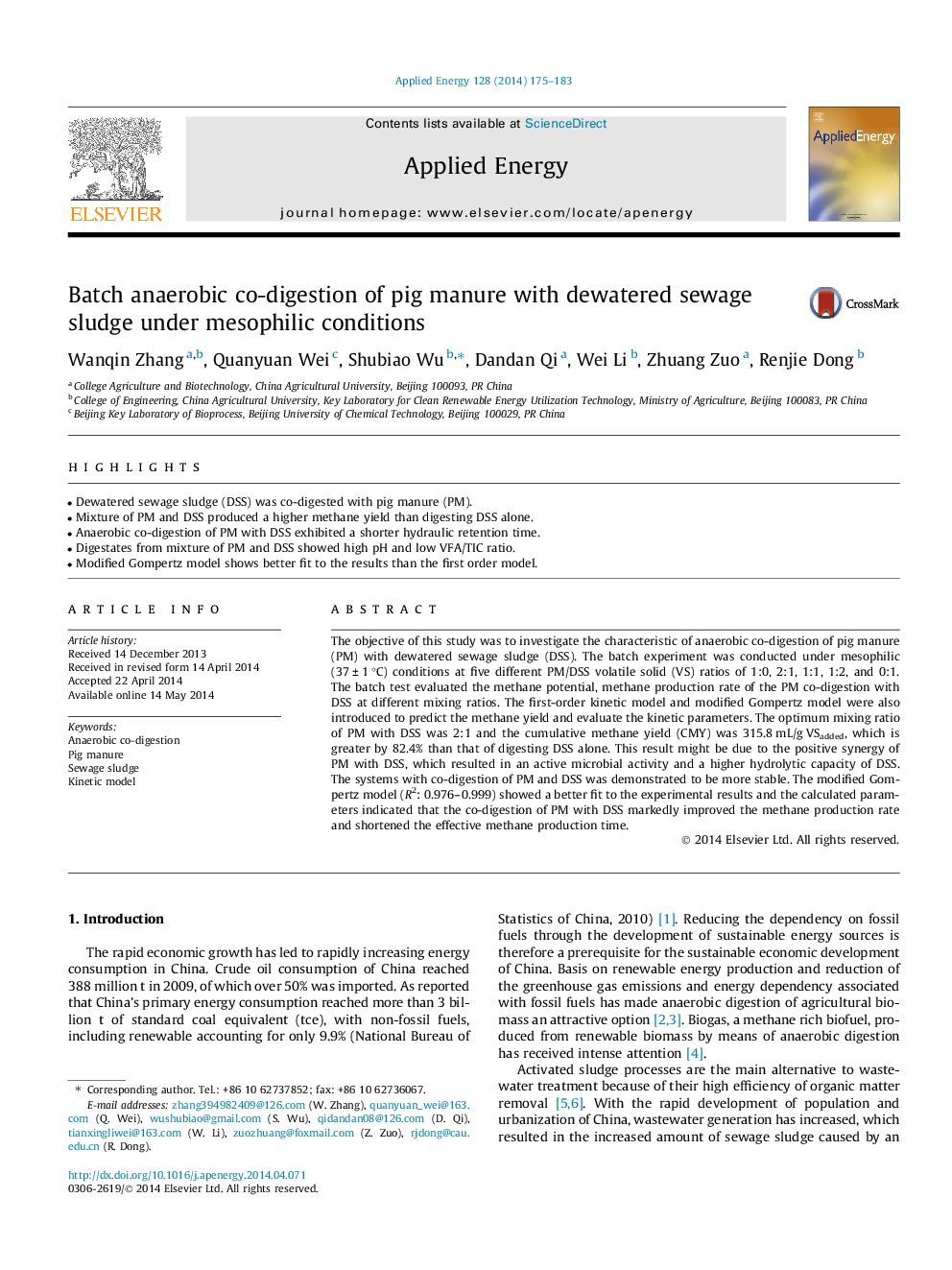| Article ID | Journal | Published Year | Pages | File Type |
|---|---|---|---|---|
| 242675 | Applied Energy | 2014 | 9 Pages |
•Dewatered sewage sludge (DSS) was co-digested with pig manure (PM).•Mixture of PM and DSS produced a higher methane yield than digesting DSS alone.•Anaerobic co-digestion of PM with DSS exhibited a shorter hydraulic retention time.•Digestates from mixture of PM and DSS showed high pH and low VFA/TIC ratio.•Modified Gompertz model shows better fit to the results than the first order model.
The objective of this study was to investigate the characteristic of anaerobic co-digestion of pig manure (PM) with dewatered sewage sludge (DSS). The batch experiment was conducted under mesophilic (37 ± 1 °C) conditions at five different PM/DSS volatile solid (VS) ratios of 1:0, 2:1, 1:1, 1:2, and 0:1. The batch test evaluated the methane potential, methane production rate of the PM co-digestion with DSS at different mixing ratios. The first-order kinetic model and modified Gompertz model were also introduced to predict the methane yield and evaluate the kinetic parameters. The optimum mixing ratio of PM with DSS was 2:1 and the cumulative methane yield (CMY) was 315.8 mL/g VSadded, which is greater by 82.4% than that of digesting DSS alone. This result might be due to the positive synergy of PM with DSS, which resulted in an active microbial activity and a higher hydrolytic capacity of DSS. The systems with co-digestion of PM and DSS was demonstrated to be more stable. The modified Gompertz model (R2: 0.976–0.999) showed a better fit to the experimental results and the calculated parameters indicated that the co-digestion of PM with DSS markedly improved the methane production rate and shortened the effective methane production time.
